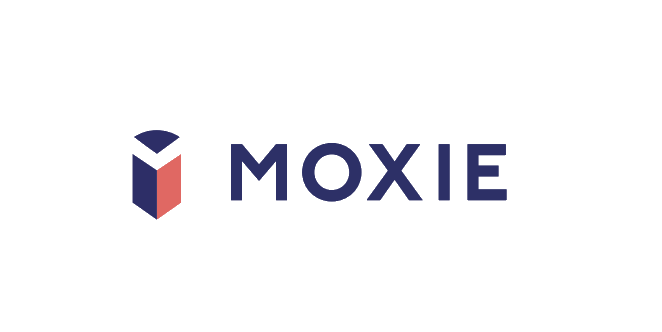How to Use ChatGPT for Academic Purposes
This blog post was inspired by a recent workshop by Dr. Kimberly Becker on using ChatGPT for academic purposes.
🔗 Join today for FREE and begin using our AI tools, which are built using the most advanced version of ChatGPT, to revolutionize your academic research and optimize your writing process.
Generative artificial intelligence (AI) models like ChatGPT have recently received a LOT of attention. I’ve personally found myself wondering, Has the time finally come? Are the robots taking over?
Jokes aside, ChatGPT is a powerful language model developed by OpenAI. Without getting into too much technical detail, ChatGPT is designed to understand and generate human-like text using probability algorithms. If you want to know more about how ChatGPT works, read this article by Stephen Wolfram.
Ethical concerns in academia
There is notable controversy about the use of AI for academic purposes. Some critics have raised concerns about academic integrity, arguing that using a language model for writing assignments is akin to plagiarism.
A few other concerns include the following:
Accuracy: ChaptGPT doesn’t always give accurate answers – it gives probabilistic answers. Thus, its responses are based on patterns, not facts.
Bias: ChatGPT is only as unbiased as the data it is trained on. Therefore, the generated text may also be biased if the data is biased. For more on this, here is an MIT Technology Review article on How Open AI is trying to make ChatGPT safer and less biased.
Privacy: ChatGPT requires a vast amount of data to train effectively, and this data may include personal information from emails, etc. Keep in mind that the text or data you upload into ChatGPT can be used to generate future responses. You can read Open AI’s privacy policy here.
Despite these concerns, there are legitimate uses of ChatGPT in academia.
Here are a few ways academics can ethically use ChatGPT:
Curate knowledge: ChatGPT can be used for knowledge curation by summarizing lengthy text sources such as academic articles, research papers, or news articles. Researchers can input the text into the model and allow it to generate a concise summary of the key points, making the information more accessible and easier to understand.
Answer questions: ChatGPT can help you answer burning questions like most online search engines. For instance, if you are trying to choose between writing a standard five-chapter dissertation and a three-article dissertation, you could ask ChatGPT to explain the pros and cons of each. However, the free version of ChatGPT is not connected to the internet and, thus, doesn't have access to current events.
Generate data: ChatGPT can generate data by providing it with a set of text prompts and allowing it to generate new responses. Another way ChatGPT can generate data is by fine-tuning the model on a specific dataset, allowing it to generate new data points similar in style and content to the original dataset. This can be useful for creating larger datasets or generating synthetic data to supplement real-world data. However, it is important to note that synthetic data generated by ChatGPT may not always accurately reflect real-world data and should be used cautiously.
Analyze data: ChatGPT can analyze data by fine-tuning the model on a specific dataset and then using it to classify or categorize new text data. For example, researchers may train ChatGPT on a dataset of student reviews and then use the model to classify new student reviews based on their sentiment (positive, negative, or neutral). Another way ChatGPT can be used for data analysis is by using it to generate summaries of longer text data. For instance, researchers may use ChatGPT to summarize lengthy research articles or news articles by inputting the text and allowing the model to generate a concise summary. ChatGPT can also generate insights from text data by identifying patterns or themes in large datasets. For example, researchers may input a large dataset of social media posts and allow ChatGPT to identify common themes or topics that emerge from the data.
Here are some interesting online articles about the uses of ChatGPT in academia:
Educators need to understand and embrace artificial intelligence writing tools
ChatGPT and AI text generators: Should academia adapt or resist?
Best practices for using ChatGPT
Learning to use ChatGPT can take practice. When typing a prompt into ChatGPT, it is best to:
Describe its role, including the topic and context.
Describe relevant domain and disciplinary knowledge, information sources, analytic models, audience analysis, etc.
Describe specific tasks as precisely and concisely as possible, including specific analytical or communicative strategies that should be used.
Specify length, style, and/or genre.
How to acknowledge ChatGPT
If you use ChatGPT to help you write any part of an academic paper, manuscript, thesis, etc., you should acknowledge its role. ChatGPT cannot be cited as a source because it is not a credible source of factual information, and it cannot be listed as an author because it cannot share responsibility for the content of a manuscript. Therefore, you need to acknowledge ChatGPT in the Methods or Acknowledgements section of the academic document. For example, “ChatGPT was used to generate ideas for the use of theory in this study.”
Academic journals have started to update their authorship and editorial policies to address the use of AI tools, such as ChatGPT. Here is a recent editorial published by Nature on ground rules for the use of generative AI tools.
Elicit is another popular AI tool for researchers. This free, open-access AI research tool can systematize citations and identify patterns. For example, Elicit can find relevant papers without a perfect keyword match, summarize takeaways, and extract key information. I’m currently assessing how Elicit can be used to write a literature review, so stay tuned for a future blog post on my experience.
Join today for free and begin using our AI tools, which are built using the most advanced version of ChatGPT, to revolutionize your academic research and optimize your writing process.
